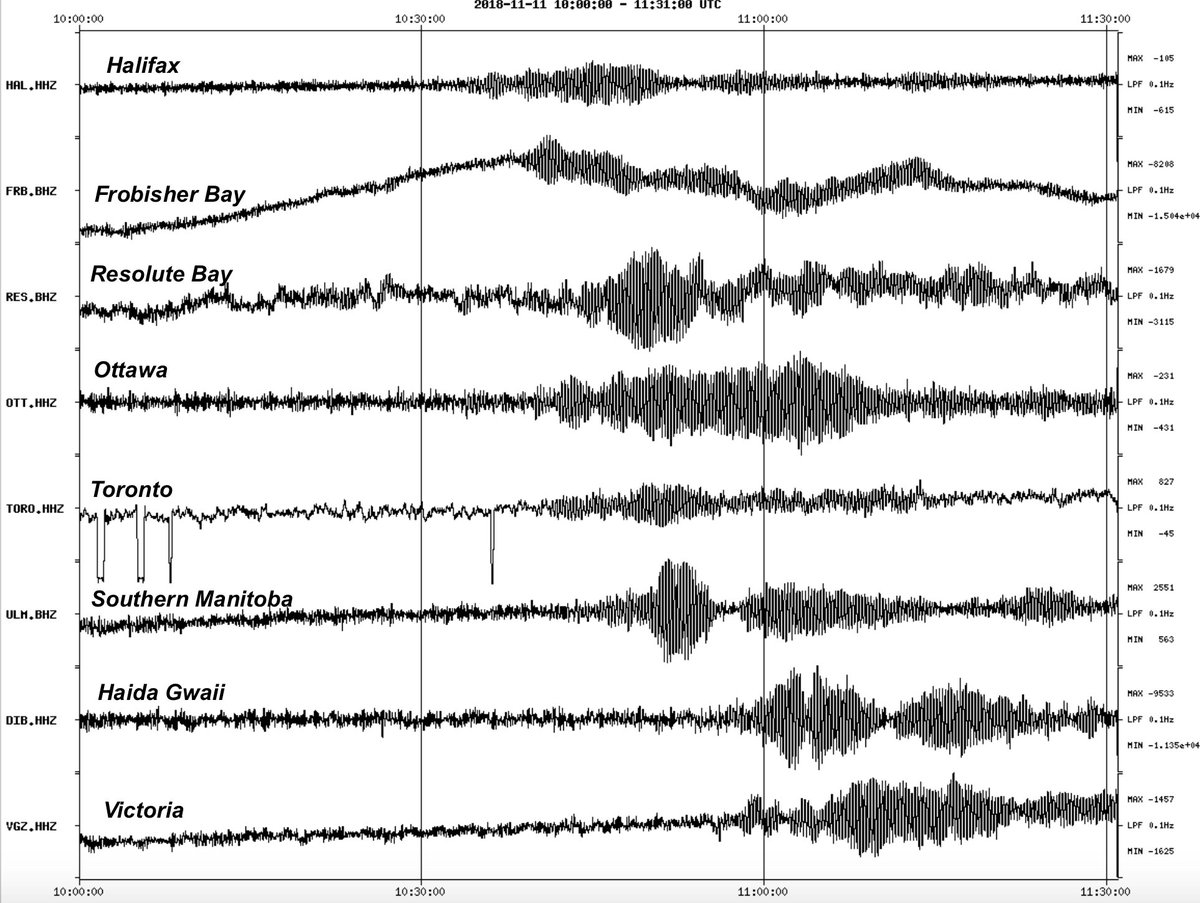Bizarre Seismic Waves Rippled Around the World – and Nobody Knows Why
Emma Fiala, The Mind Unleashed
Waking Times
Something very unusual rumbled across planet Earth on November 11th, and scientists say they’ve never seen anything like it. For 20 minutes, instruments measured unusual seismic activity over 10,000 miles away from where it originated, yet not a single human felt them.
Seismic waves, originating from the French island of Mayotte, between Africa and Madagascar, traveled around the world. They were recorded throughout Africa and as far away as Chile, New Zealand, Canada and Hawaii, nearly 11,000 miles away.
Not only did no humans feel these bizarre seismic waves, only one human noticed the strange signal on the United States Geological Survey’s (USGS) seismograph displays:
Matarikipax also tweeted waves detected in Zambia, Ethiopia, Spain and New Zealand. Thanks to this social media savvy earthquake enthusiast, researchers around the world took note.
The French Geological Survey team (BRGM) working at the Geology Laboratory of the Ecole Normale Supérieure in Paris, reported that on November 11th “an atypical very low frequency signal was detected by the international networks.” Low frequency signals of this kind are characteristic of volcanic phenomena.
Göran Ekström, Columbia University seismologist, told National Geographic:
“I don’t think I’ve seen anything like it.”
Normally, an earthquake releases its energy in one big burst, resulting in the presence of three different waves – P-waves, S-waves, and surface waves. Typical P- or S- wave was recorded during the event.
The first type is a compressional wave (P-wave). These waves are the fastest of the three and they shake the ground back and forth. The next is a shear wave (S-wave). S-waves translate into large jolts and strong side-to-side shaking. Both P-waves and S-waves have high frequencies.
The third type is a surface wave. Surface waves occur near the earth’s surface and are felt as a rolling motion. Strong earthquakes can result in surface waves that travel the globe multiple times.
Despite the absence of a large earthquake near Mayotte on November 11th, low frequency waves similar to surface waves were measured, but they were unlike any previously measured surface waves – they were uniform and clean.
According to the French Geological Survey, Mayotte has seen several hundred seismic events since May of 2018. When multiple seismic events occur in a specific zone over a short period of time, it is often referred to as an “earthquake swarm.” Prior to the swarm events beginning in May, earthquakes on and around the island were of the usual “main shock, followed by smaller after-shocks” type. The appearance of this particular November event, neither earthquake nor swarm, took scientists by surprise.
The ground moved up and down Every 17 seconds the ground moved up and down as the waves rolled — John Cassidy, an earthquake seismologist with Natural Resources Canada, told Global News that it was a “very slow shaking.”
“Based on the seismic events and GPS formation data, there is likely a volcanic link — movement of magma chambers, etc.,” Cassidy added.
If there is indeed volcanic activity occurring near Mayotte, it would be the first in over 4,000 years. Since July, GPS stations on the island have tracked Mayotte moving some 1.2 inches south and 2.4 inches east according to the Institut National de L’information Géographique et Forestière.
Helen Robinson, a Ph.D. candidate in applied volcanology at the University of Glasgow, filtered out the low frequency waves and found what appeared to be P- and S- waves resulting from tiny tremors at the very start of the event. But even those weren’t normal.
“They’re too nice; they’re too perfect to be nature,” Robinson joked. She went on to add that an industrial source for the waves is not possible.
All we really know is that no one felt the mysterious seismic waves and no one knows what they mean. Current theories suggest that a rhythmic motion occurred in a magma chamber thanks to some sort of subsurface shift or chamber collapse, but as of yet, little evidence exists. But rest assured, BRGM is on the case and plans to complete surveys of the ocean bottom around Mayotte and investigate the possibility of a submarine volcanic eruption.
About the Author
Emma Fiala writes for The Mind Unleashed where this article (Bizarre Seismic Waves Rippled Around the World – and Nobody Knows Why) was originally published.
Like Waking Times on Facebook. Follow Waking Times on Twitter.



